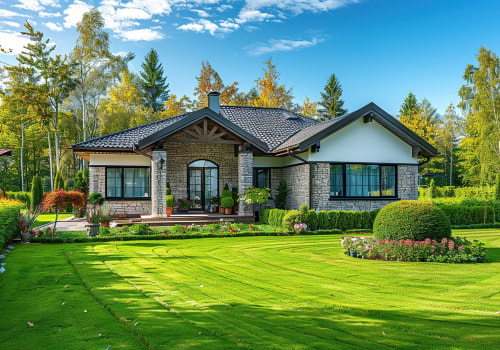Hardscaping, the practice of incorporating non-living elements like stone, brick, and wood into landscape design, is increasingly recognized as a valuable investment for homeowners. This method enhances both the aesthetic appeal and functional utility of outdoor spaces, making it an attractive option for many. Hardscaping can transform a bland yard into a stunning outdoor living area, creating spaces for relaxation, entertainment, and activities. Elements such as patios, walkways, retaining walls, and fire pits not only add to the beauty of a property but also improve its usability and convenience. This versatility makes hardscaping a sound investment that yields substantial returns over time.
One of the primary advantages of hardscaping is the increase in property value it can provide. Homes with well-designed hardscape features often stand out in the real estate market, attracting more potential buyers and commanding higher prices. Real estate experts agree that outdoor living spaces are among the top features buyers look for, and investing in hardscaping can lead to a significant return on investment when selling a home. Features like outdoor kitchens, stone patios, and water features create an inviting atmosphere that appeals to prospective buyers, making a property more desirable and marketable.
In addition to enhancing property value, hardscaping also offers practical benefits. Properly installed hardscape elements can help manage water runoff and erosion, protecting a property from potential damage. Retaining walls, for instance, not only add a visual appeal but also stabilize slopes and prevent soil erosion. Similarly, permeable pavers and gravel paths allow rainwater to infiltrate the ground, reducing runoff and promoting groundwater recharge. These functional benefits demonstrate that hardscaping is not just about aesthetics but also about creating a more sustainable and resilient landscape.
Moreover, hardscaping can significantly reduce maintenance efforts and costs compared to traditional landscaping. Unlike lawns and gardens that require regular mowing, watering, and fertilizing, hardscape elements are relatively low maintenance. Stone patios and concrete walkways, for example, require minimal upkeep, saving homeowners time and money in the long run. This durability and ease of maintenance make hardscaping an attractive option for those looking to enjoy beautiful outdoor spaces without the constant upkeep associated with living plants and lawns.
Hardscaping also provides opportunities for creative expression and personalization. With a wide variety of materials, colors, and textures available, homeowners can design unique outdoor spaces that reflect their personal style and preferences. From elegant stone pathways to rustic wooden decks, the possibilities are endless. Incorporating artistic elements like mosaic patterns or custom-built features can further enhance the uniqueness and charm of a hardscaped area, making it a true extension of the home’s interior style.
Another aspect to consider is the enhanced outdoor living experience that hardscaping provides. Well-designed outdoor spaces can serve as extensions of indoor living areas, offering additional space for dining, entertaining, and relaxing. Features like built-in seating, outdoor fireplaces, and pergolas create inviting areas where families and friends can gather and enjoy time together. These spaces can be used year-round, enhancing the overall quality of life and making a home more enjoyable.
Hardscaping can also improve the functionality and organization of outdoor spaces. For instance, creating designated areas for specific activities, such as a dining area, a play area for children, or a garden space, can make an outdoor area more organized and enjoyable. Storage solutions like storage boxes can be seamlessly integrated into the design, providing convenient places to keep outdoor tools, cushions, and other items, ensuring that the space remains tidy and clutter-free.
Furthermore, hardscaping can complement and enhance the existing natural features of a property. By thoughtfully integrating hardscape elements with the landscape, homeowners can highlight the beauty of mature trees, water features, and garden beds. This harmonious blend of hard and soft elements creates a balanced and aesthetically pleasing environment that feels cohesive and well-designed.
In conclusion, hardscaping is indeed a worthwhile investment that offers numerous benefits. From increasing property value and reducing maintenance costs to enhancing the beauty and functionality of outdoor spaces, hardscaping provides a solid return on investment. It allows homeowners to create personalized, low-maintenance, and sustainable outdoor environments that enhance their quality of life and the overall appeal of their property. Whether planning to sell a home or simply wanting to enjoy an improved outdoor living experience, investing in hardscaping is a decision that pays off in multiple ways.








